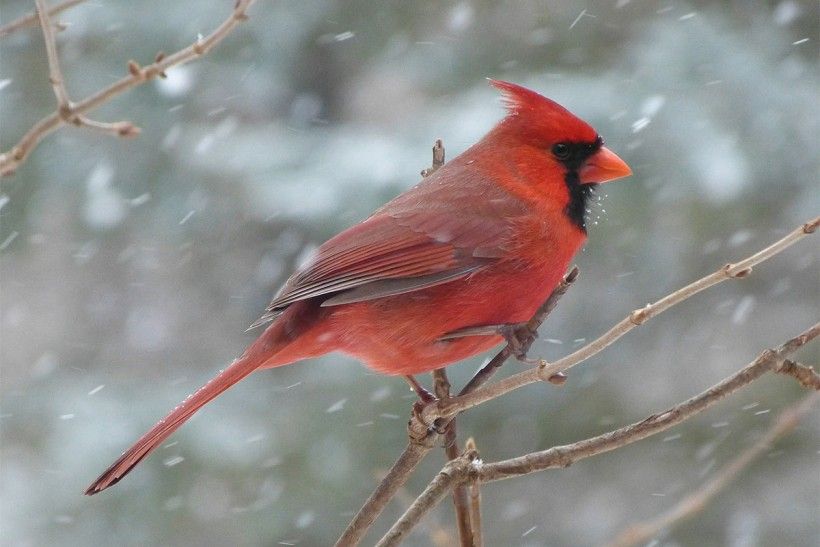
Winter is often described as cold, dark, and dreary. The good news is it doesn’t have to be that way! We are lucky to live in a region with several native plants that offer winter color and provide food and shelter to many over-wintering bird species. A colorful native garden alive with beautiful bird species might just be the remedy for those cold, and dreary, winter days.
What is a native plant and why should we help cultivate them? In our region it is the natural flora that was present at the time the European settlers arrived. These plants co-evolved with wildlife over many hundreds of years creating a complex network of relationships – providing habitat and food for many species. This is the foundation of our region’s ecosystem. Native plants can be easier to grow because of this evolution and are often naturally resistant to pests and require less maintenance (i.e. watering, pruning) to thrive.
There exists an abundance of native plants to choose from and an online search might leave you overwhelmed. The best way to start is by adding a few plants each season.
Below is a starter list of native plants to add to your garden for winter interest:
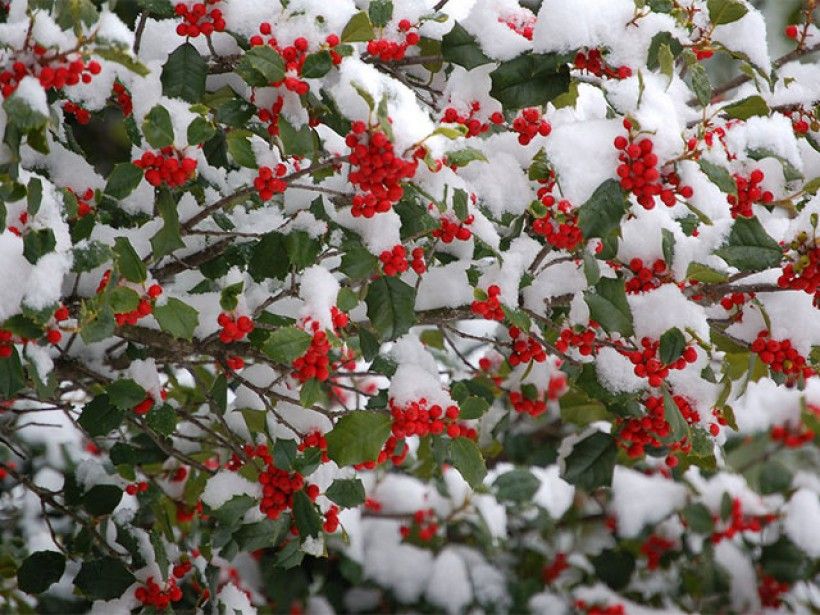
American Holly (Ilex opaca)
A tree that can grow to a height of 40’-50’ and a width of 18’-40’ at maturity. These trees produce inconspicuous greenish to cream-colored flowers in the spring and bright red berries in the fall. This red fruit is a beautiful contrast to the evergreen, waxy, sharp-pointed leaves. This tree grows well in full sun to partial shade and is tolerant of different soil types. However, take care not to plant it in windy, exposed locations where moving air might dry out the leaves. The berries are a valuable winter food source for many bird species including the American Robin, Cedar Waxwing, Gray Catbird, and Northern Mockingbird. As an evergreen this tree provides shelter for wildlife throughout the harsh winter. Like all hollies, this plant is dioecious and needs at least one male plant close by for the female plants to produce berries. More information
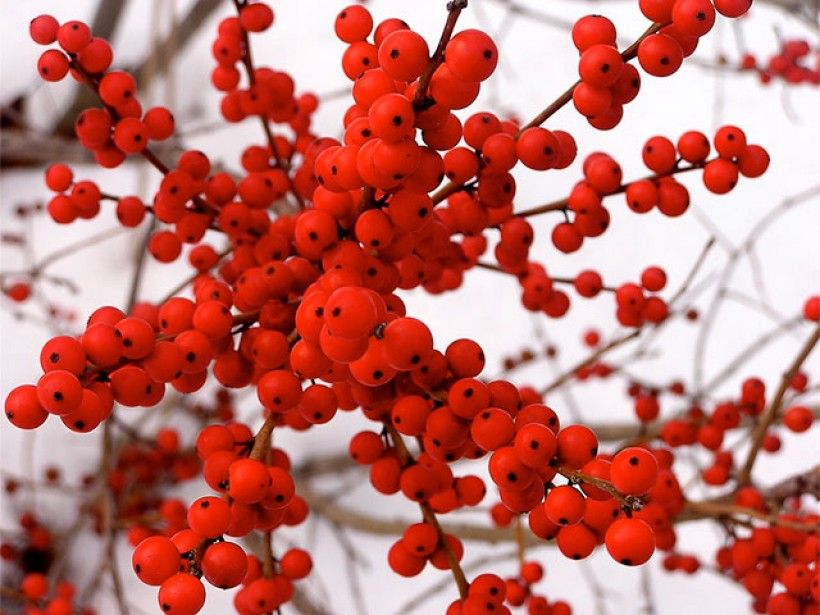
‘Jolly Red’ Winterberry (Ilex verticillata)
A deciduous holly that can grow to a height of 6’-15’. Tiny white flowers bloom in June. In the fall, the leaves turn a lovely burgundy and give way to red berries that brightly decorate the bare branches in the winter. Winterberry will produce more berries in full sun and prefers wet areas, but will do reasonably well in dryer conditions. It is a favorite of many bird species including American Robin, Hermit Thrush, Eastern Bluebird, White-throated Sparrow and Yellow-bellied Sapsucker. More Information
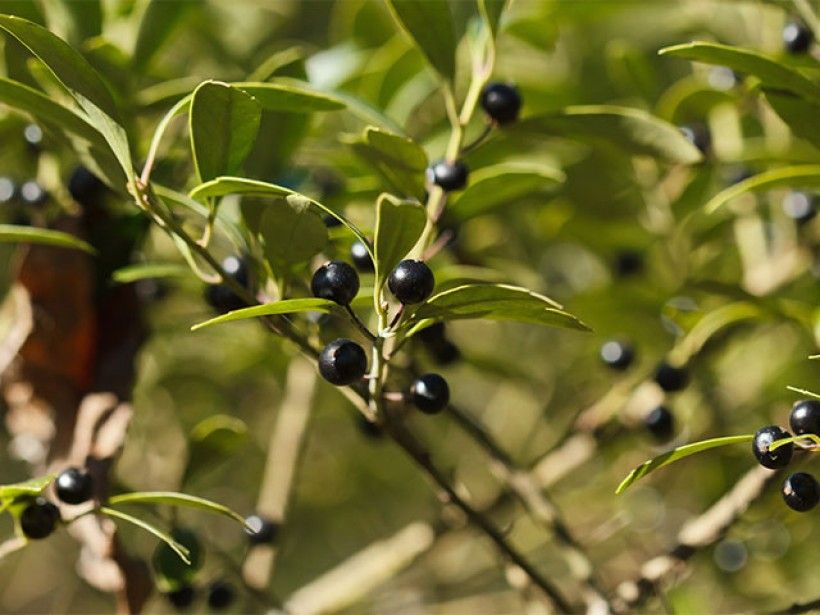
Inkberry (Ilex glabra):
An evergreen shrub that can grow to a height of 4’-8’. Young plants are compact but can become leggy with age if not pruned. It often spreads out by forming suckering colonies which provide shelter to wildlife during the harsh winter months. Full to partial sun is best and it prefers an acidic pH and adequate soil moisture. It has small light green flowers in the spring and bears dark, blue-black fruit in the fall. The leaves are more delicate in appearance than the American Holly and can become a dark purplish color in winter adding visual interest to the winter garden. Many birds feed on the dark berries including American Robins, Cedar Waxwings, Black-capped Chickadees, and Titmice. More Information
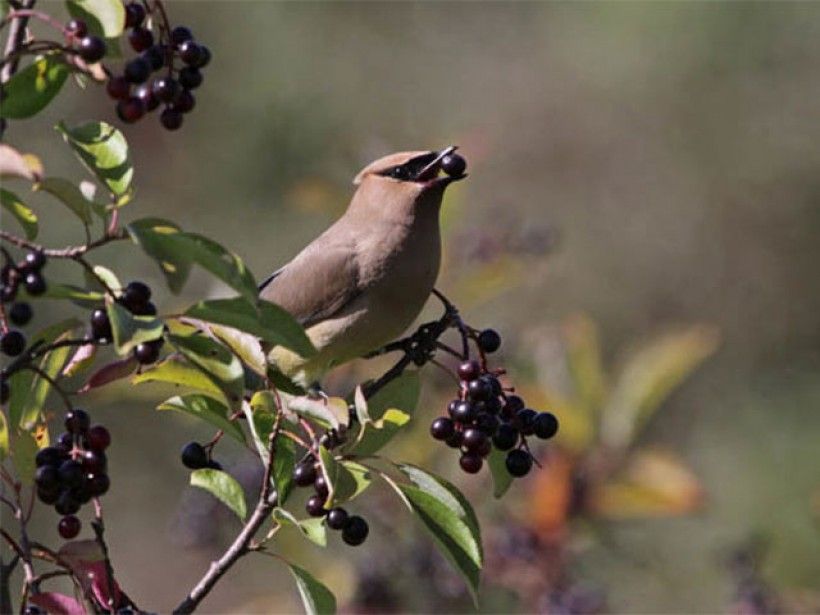
Blackhaw (Viburnum prunifolium):
A medium-sized deciduous shrub that can grow to a height of 15’. It blooms showy white clusters of flowers in the spring and pink, maturing to black, oval-shaped fruit in the fall and winter. The autumn foliage is a beautiful purplish color. Blackhaws are easy to grow and readily adaptable to most conditions. Birds attracted to the fruit include the Cardinal, Cedar Waxwing, Hermit Thrush, Bluebird and White-throated sparrows. More Information

Staghorn Sumac (Rhus typhina)
A large open shrub that grows to a height of 15’-25’. It has large pinnacle-shaped flowers that bloom in June. The fruit is a crimson-colored, showy, pinnacle of seeds that persist throughout winter. Their fiery, fall foliage is a sight to see. This is an easy plant to grow and tolerant of most conditions preferring full sun to partial shade. Many birds feed on Staghorn Sumac seeds including American crow, Northern Mockingbird, American Robin, Eastern Bluebird. More Information
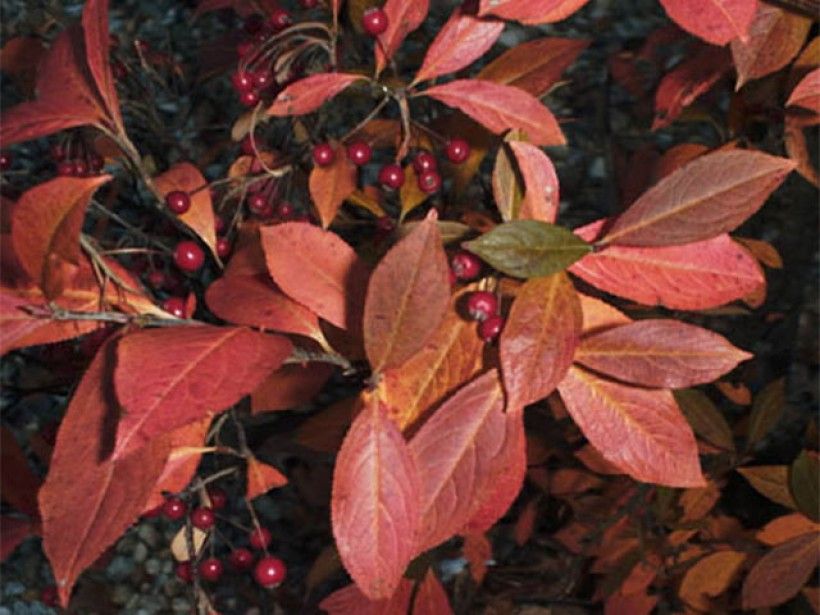
Red Chokeberry (Aronia arbutifolia)
A hardy shrub that grows to a height of 8’ and half that in width. It has clusters of white flowers and bright red berries that last throughout winter. In the fall, it shows off impressive leaf color. It produces more fruit when planted in the sun and easily tolerates most growing conditions. This native plant attracts several birds including the Black-capped Chickadee, Eastern Meadowlark, Cedar Waxwing and Wild Turkey. More Information
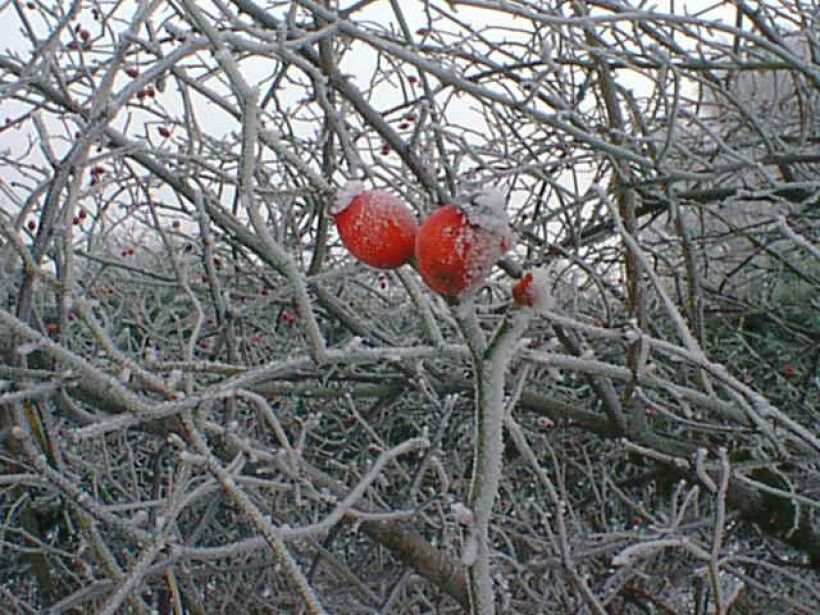
Virginia Rose (Rosa virginiana)
A native rose shrub that blooms lovely pink flowers in the spring. It grows to a height of 4’ – 6’ tall. It spreads by suckering so make sure to give it plenty of room. When summer ends, the flowers turn to red rose hips that provide food for birds and wildlife throughout the winter. The birds that feed upon the nutritious rose hips include Wild Turkey, Brown Thrasher, American Robin, Eastern Bluebird, Northern Mockingbird, Northern Cardinal, Cedar Waxwing, and American Goldfinch. More Information
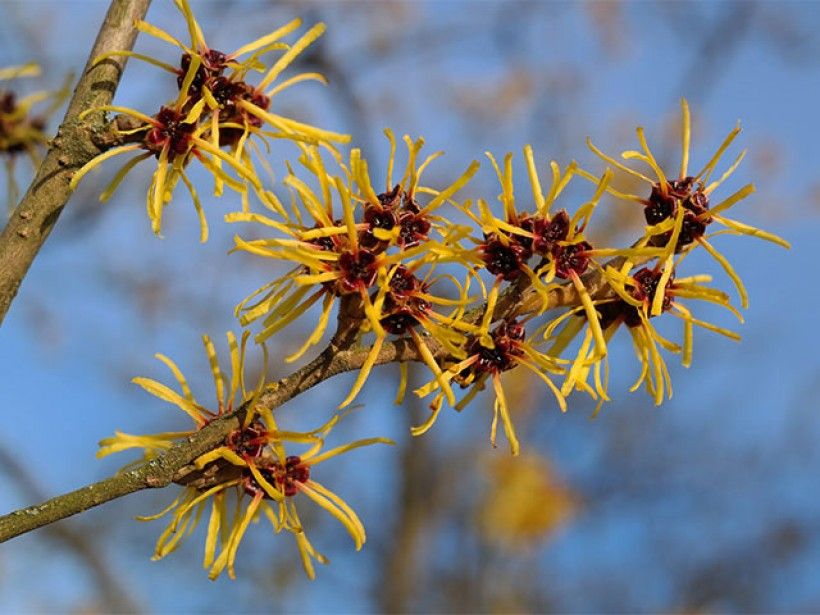
American Witchhazel (Hamamelis virginiana L.)
A deciduous large shrub that can grow to 10’-30’. This tree blooms in late October to early November after its fall foliage has dropped. The striking flowers are bright yellow and spider-like in shape and add unexpected color. It is very tolerant of light and moisture conditions, but usually found in nature as an under-story plant in forests. The low-lateral branches are favored by many bird species as nesting sites. More Information
More information:
https://www.allaboutbirds.org/the-best-plants-and-trees-to-plant-for-birds-a-starter-list/
http://www.nwf.org/news-and-magazines/national-wildlife/birds/archives/2010/birds-and-berries.aspx
http://greenwich.audubon.org/native-shrubs-for-birds
Photos:
American Holly: photo by Studio Amore, via Flickr
Winterberry: photo by Liz West, via Flickr
Inkberry: photo by Mt. Cuba Center, via Flickr
Blackhaw: photo via gardenia.net
Staghorn Sumac: photo (c) 2007 Derek Ramsey, via Wikimedia Commons
Red Chokeberry: photo via University of Connecticut Plant Database, http://hort.uconn.edu/plants
Virginia Rose: photo by Alan Heardman, via Wikimedia Commons